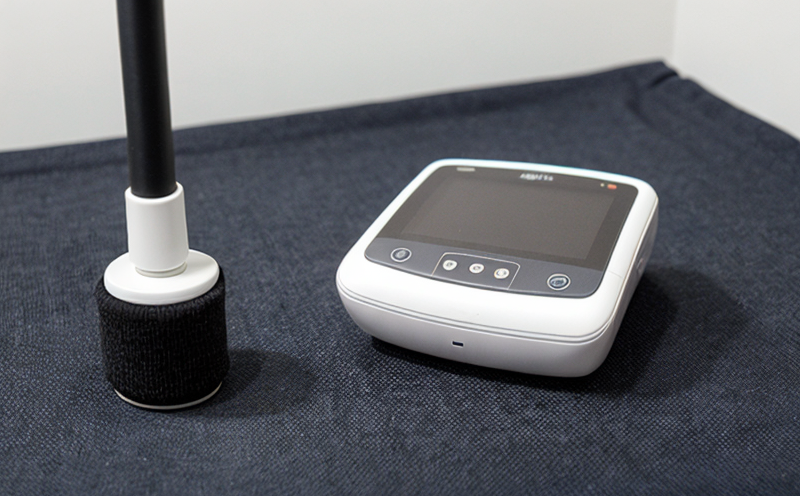AATCC 195 Moisture management performance of functional fabrics
The AATCC Test Method 195 is a critical standard used to evaluate the moisture management properties of functional textiles. This test is particularly important for garments and materials intended to be worn in various environmental conditions, such as sports apparel, workwear, and outdoor clothing. Moisture management performance refers to how effectively a fabric can absorb sweat or other liquids, distribute them over its surface, and allow them to evaporate quickly.
Understanding the moisture management properties of functional fabrics is essential for quality assurance in the textile industry. Consumers expect garments that not only look good but also perform well under different conditions. For instance, a fabric with poor moisture management can lead to discomfort or even health issues, such as increased body temperature and potential skin irritation.
The test method involves several steps designed to simulate real-world conditions where the material is subjected to specific environmental factors like humidity, air flow, and perspiration. The specimen is placed in a controlled environment, exposed to different levels of humidity, and then evaluated for its ability to manage moisture. This comprehensive approach ensures that the fabric's performance is accurately assessed under various conditions it may encounter during use.
The AATCC 195 test method provides detailed instructions on specimen preparation, measurement procedures, and data interpretation. The specimen should be cut from the material in a specific manner to ensure consistency across samples. Once prepared, these specimens are then subjected to controlled environmental conditions that mimic real-world use. This includes temperature, humidity levels, air flow rates, and exposure times.
During testing, moisture is applied to the fabric according to predefined protocols, simulating perspiration or other forms of liquid contact. The fabric's ability to manage this moisture is then measured using specialized equipment designed to capture evaporation rates and distribution patterns. These measurements are critical in determining the effectiveness of the fabric in maintaining comfort and preventing heat retention.
The results of the AATCC 195 test provide valuable insights into the performance characteristics of functional fabrics, helping manufacturers make informed decisions about material selection and product design. By adhering to this standard, textile companies can ensure that their products meet or exceed customer expectations for comfort and functionality in a wide range of applications.
Understanding the moisture management properties of functional textiles is crucial not only for enhancing user experience but also for complying with industry standards and regulations. This test method plays a vital role in maintaining high-quality standards within the textile sector, ensuring that products are safe, comfortable, and perform well across different environments.
Applied Standards
| Standard | Description |
|---|---|
| AATCC Test Method 195 | This standard provides a method for determining the moisture management performance of functional fabrics. It involves measuring the rate at which moisture is absorbed and then evaporated from the fabric under controlled conditions. |
Quality and Reliability Assurance
The quality and reliability of functional fabrics are paramount in ensuring that products meet or exceed customer expectations. The AATCC 195 test method plays a critical role in this process by providing standardized procedures for evaluating moisture management performance. By adhering to these standards, manufacturers can ensure consistent product quality across different batches and production runs.
Quality assurance in the textile industry involves several key components, including raw material selection, manufacturing processes, testing methodologies, and post-production inspections. The AATCC 195 test method is a crucial part of this process as it helps identify any deficiencies or inconsistencies in moisture management performance early on, allowing for timely corrective actions.
Reliability assurance ensures that products perform consistently across different environments and conditions. This is particularly important for functional fabrics used in extreme or varied climates. By incorporating the AATCC 195 test method into their quality control procedures, manufacturers can build confidence in their products' ability to deliver optimal performance under diverse environmental conditions.
Compliance with industry standards like AATCC 195 also enhances a company's reputation and market position. Consumers are increasingly demanding products that meet specific performance criteria, making adherence to such standards an essential aspect of successful marketing strategies. By demonstrating commitment to quality through rigorous testing methods like AATCC 195, companies can build trust with their customers and differentiate themselves in competitive markets.
Furthermore, compliance with these standards helps ensure that products are safe for use by the general public. Proper moisture management is not only a comfort issue but also an important factor in preventing heat stress and other potential health risks associated with excessive body temperature regulation.
International Acceptance and Recognition
The AATCC Test Method 195 has gained widespread acceptance and recognition within the textile industry, both nationally and internationally. Its adoption by leading manufacturers and regulatory bodies underscores its importance in ensuring consistent quality across different regions.
Many countries have adopted or referenced this standard in their national standards or guidelines for functional textiles. This global consensus reflects the growing emphasis on sustainability and performance enhancement in the textile sector. By aligning with internationally recognized standards like AATCC 195, companies can ensure that their products meet high-quality benchmarks regardless of where they are manufactured or sold.
The standard's acceptance also contributes to harmonization efforts among various national standards organizations. This collaboration fosters greater consistency and interoperability in the textile industry, making it easier for manufacturers to scale operations globally while maintaining product quality.
Moreover, compliance with such standards can facilitate smoother trade between countries by reducing barriers associated with differing technical requirements. As more nations adopt internationally recognized standards like AATCC 195, cross-border commerce becomes less complicated and more efficient.
In conclusion, the international acceptance of the AATCC Test Method 195 highlights its significance in promoting quality assurance practices within the textile industry. Its widespread adoption demonstrates a collective commitment to excellence and reliability, which ultimately benefits consumers by providing them with products that consistently perform well under various conditions.





